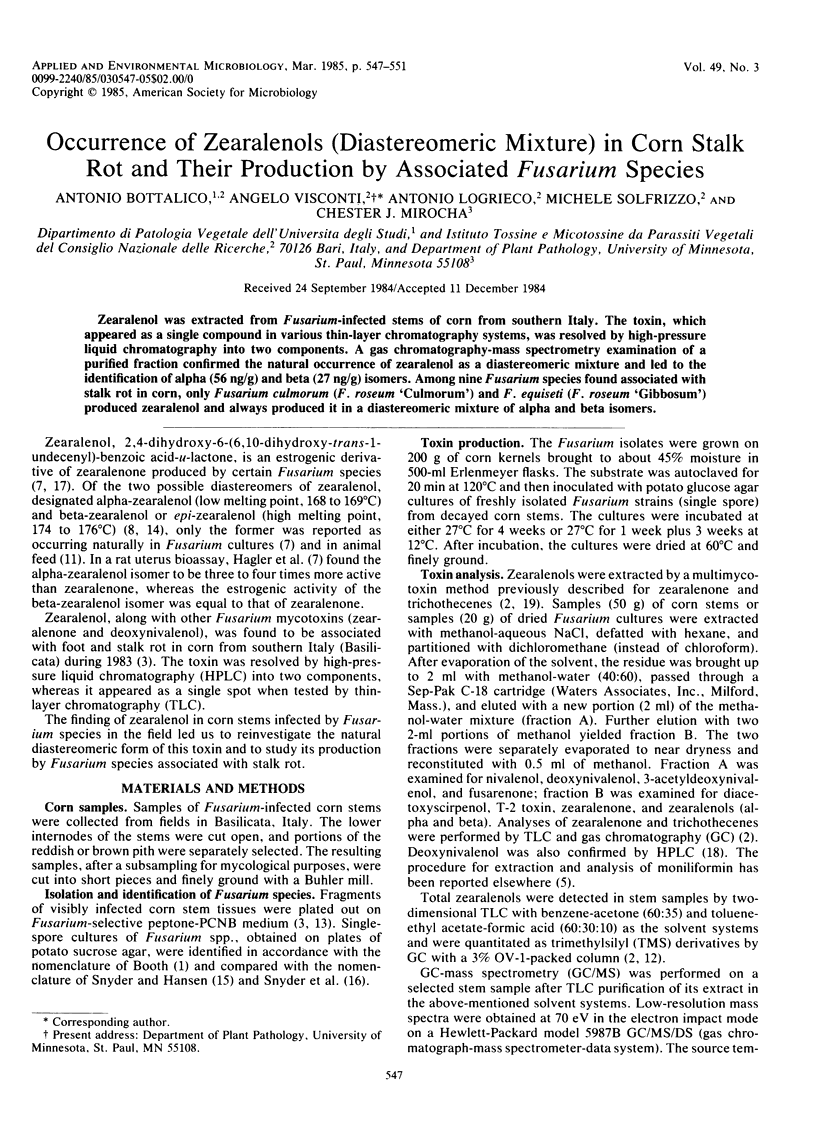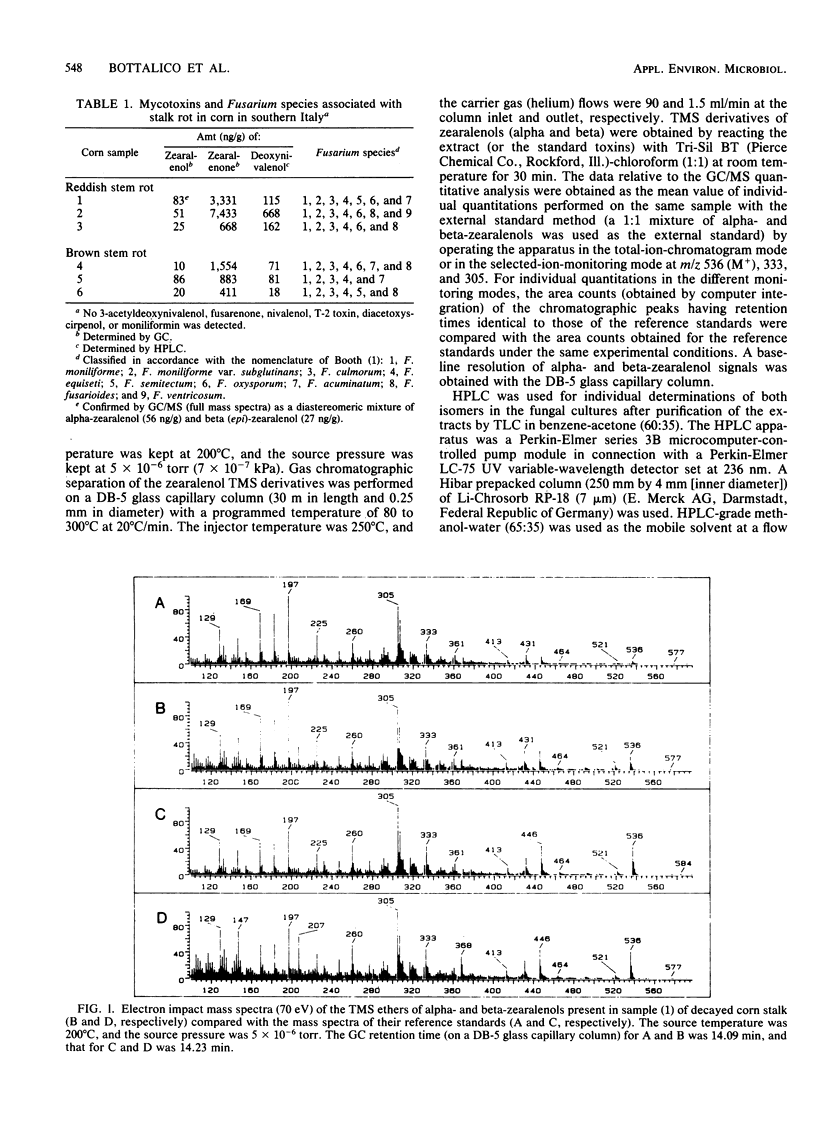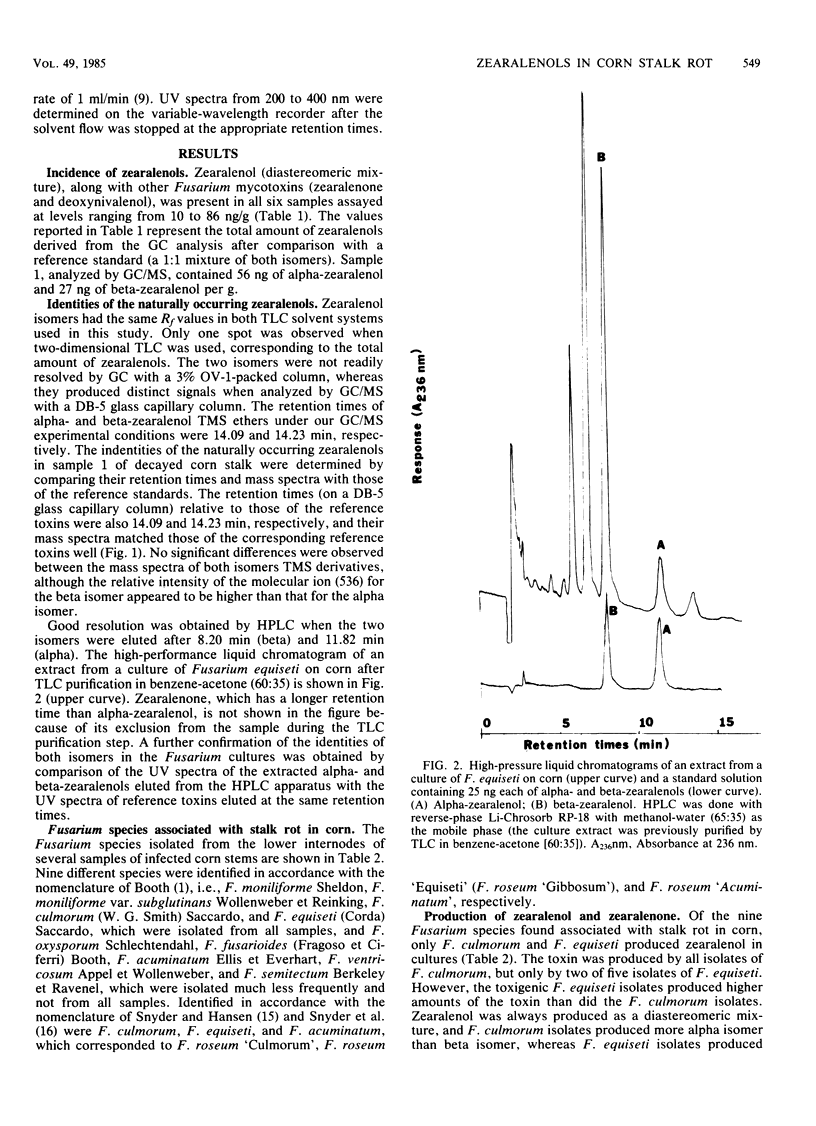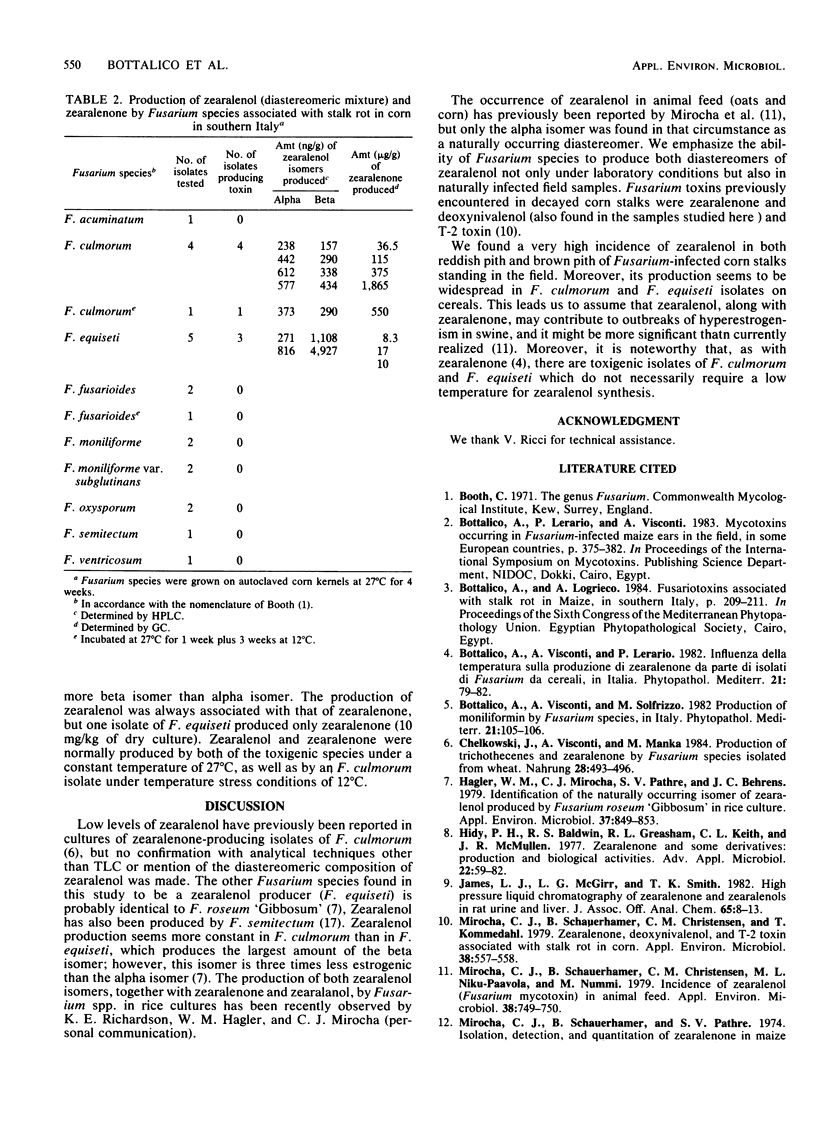Abstract
Zearalenol was extracted from Fusarium-infected stems of corn from southern Italy. The toxin, which appeared as a single compound in various thin-layer chromatography systems, was resolved by high-pressure liquid chromatography into two components. A gas chromatography-mass spectrometry examination of a purified fraction confirmed the natural occurrence of zearalenol as a diastereomeric mixture and led to the identification of alpha (56 ng/g) and beta (27 ng/g) isomers. Among nine Fusarium species found associated with stalk rot in corn, only Fusarium culmorum (F. roseum `Culmorum') and F. equiseti (F. roseum `Gibbosum') produced zearalenol and always produced it in a diastereomeric mixture of alpha and beta isomers.
Full text
PDF




Selected References
These references are in PubMed. This may not be the complete list of references from this article.
- Chełkowski J., Visconti A., Mańka M. Production of trichothecenes and zearalenone by Fusarium species isolated from wheat. Nahrung. 1984;28(5):493–496. doi: 10.1002/food.19840280505. [DOI] [PubMed] [Google Scholar]
- Hagler W. M., Mirocha C. J., Pathre S. V., Behrens J. C. Identification of the naturally occurring isomer of zearalenol produced by Fusarium roseum 'Gibbosum' in rice culture. Appl Environ Microbiol. 1979 May;37(5):849–853. doi: 10.1128/aem.37.5.849-853.1979. [DOI] [PMC free article] [PubMed] [Google Scholar]
- Hidy P. H., Baldwin R. S., Greasham R. L., Keith C. L., McMullen J. R. Zearalenone and some derivatives: production and biological activities. Adv Appl Microbiol. 1977;22:59–82. doi: 10.1016/s0065-2164(08)70160-6. [DOI] [PubMed] [Google Scholar]
- James L. J., McGirr L. G., Smith T. K. High pressure liquid chromatography of zearalenone and zearalenols in rat urine and liver. J Assoc Off Anal Chem. 1982 Jan;65(1):8–13. [PubMed] [Google Scholar]
- Mirocha C. J., Schauerhamer B., Christensen C. M., Kommedahl T. Zearalenone, deoxynivalenol, and T-2 toxin associated with stalk rot in corn. Appl Environ Microbiol. 1979 Sep;38(3):557–558. doi: 10.1128/aem.38.3.557-558.1979. [DOI] [PMC free article] [PubMed] [Google Scholar]
- Mirocha C. J., Schauerhamer B., Christensen C. M., Niku-Paavola M. L., Nummi M. Incidence of zearalenol (Fusarium mycotoxin) in animal feed. Appl Environ Microbiol. 1979 Oct;38(4):749–750. doi: 10.1128/aem.38.4.749-750.1979. [DOI] [PMC free article] [PubMed] [Google Scholar]
- Mirocha C. J., Schauerhamer B., Pathre S. V. Isolation, detection, and quantitation of zearalenone in maize and barley. J Assoc Off Anal Chem. 1974 Sep;57(5):1104–1110. [PubMed] [Google Scholar]
- Stipanovic R. D., Schroeder H. W. Zearalenol and 8'-hydroxyzearalenone from Fusarium roseum. Mycopathologia. 1975 Dec 23;57(2):77–78. doi: 10.1007/BF01365707. [DOI] [PubMed] [Google Scholar]


